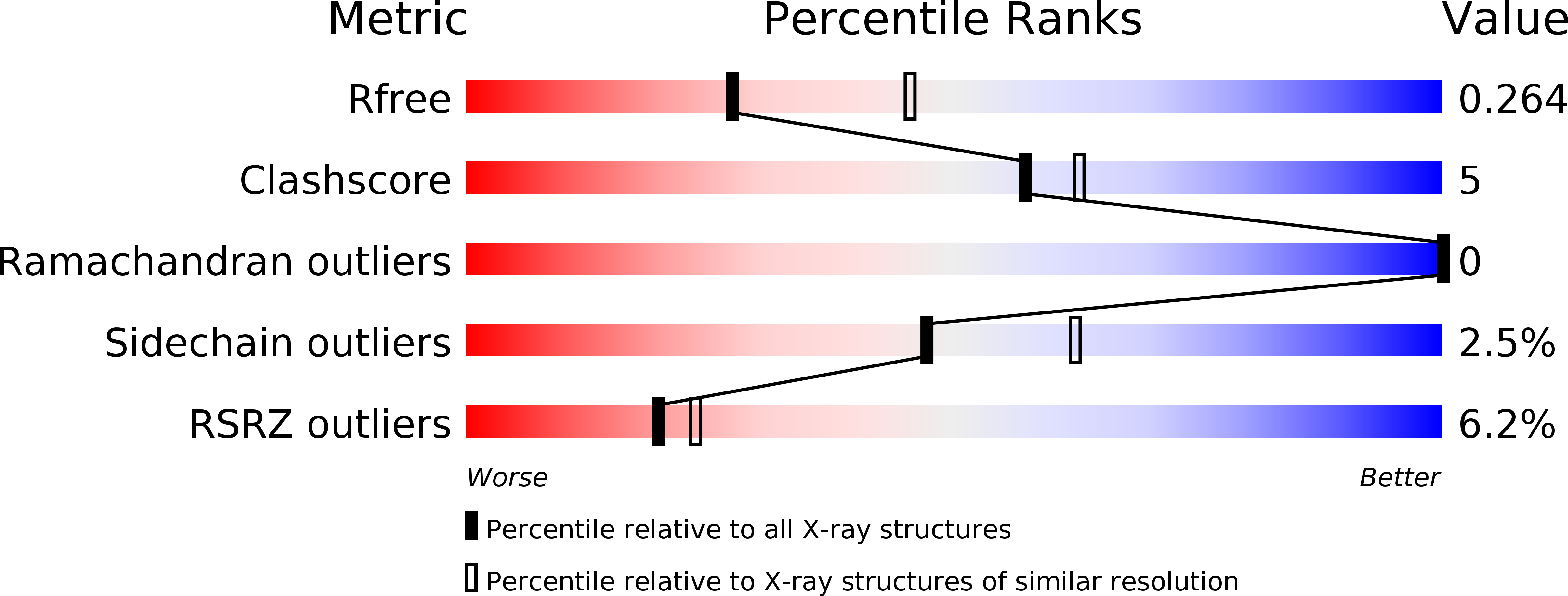Ligand-induced conformational switch in an artificial bidomain protein scaffold.
Leger, C., Di Meo, T., Aumont-Nicaise, M., Velours, C., Durand, D., Li de la Sierra-Gallay, I., van Tilbeurgh, H., Hildebrandt, N., Desmadril, M., Urvoas, A., Valerio-Lepiniec, M., Minard, P.(2019) Sci Rep 9: 1178-1178
- PubMed: 30718544
- DOI: https://doi.org/10.1038/s41598-018-37256-5
- Primary Citation of Related Structures:
6FSQ, 6FT5, 6HWP - PubMed Abstract:
Artificial proteins binding any predefined "target" protein can now be efficiently generated using combinatorial libraries based on robust protein scaffolds. αRep is such a family of artificial proteins, based on an α-solenoid protein repeat scaffold. The low aggregation propensity of the specific "binders" generated from this library opens new protein engineering opportunities such as the creation of biosensors within multidomain constructions. Here, we have explored the properties of two new types of artificial bidomain proteins based on αRep structures. Their structural and functional properties are characterized in detail using biophysical methods. The results clearly show that both bidomain proteins adopt a closed bivalve shell-like conformation, in the ligand free form. However, the presence of ligands induces a conformational transition, and the proteins adopt an open form in which each domain can bind its cognate protein partner. The open/closed equilibria alter the affinities of each domain and induce new cooperative effects. The binding-induced relative domain motion was monitored by FRET. Crystal structures of the chimeric proteins indicate that the conformation of each constituting domain is conserved but that their mutual interactions explain the emergent properties of these artificial bidomain proteins. The ligand-induced structural transition observed in these bidomain proteins should be transferable to other αRep proteins with different specificity and could provide the basis of a new generic biosensor design.
Organizational Affiliation:
Institute for Integrative Biology of the Cell (I2BC) CEA, CNRS, Univ. Paris-Sud, Université Paris-Saclay, 91198, Gif-sur-Yvette cedex, France.
















